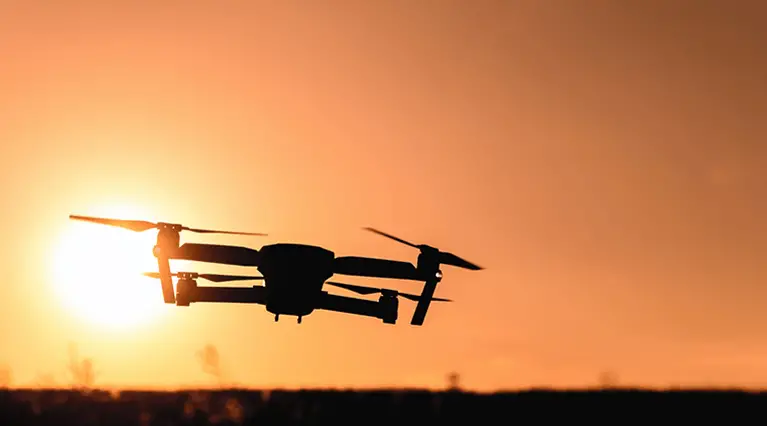Last modified on September 4th, 2020 at 7:38 am
Solar-Powered Drone Could Fly Nonstop
Scientists have developed a drone capable of using solar energy to fly for extended periods. With the eventual goal of endless flight, scientists are hoping to have more drones up in the air for more extended periods. Inventors have proposed various applications for this new tech.Some of the most interesting ones including monitoring of the ice caps and mapping terrain.
And while this drone is still in its early stages of field tests, many of the trials have shown positive results. Solar could be the way forward for drone technology.
Drones Today
Drones have earned a reputation as one of the most significant advances of the past decade. Commercial, personal and military models have far surpassed what could have been possible a few years ago. Many is claiming the current tech is just the tip of the drone iceberg. Companies are testing new applications for their crewless aerial vehicles — from shipping packages to advertising.
However, the single factor that has been most limiting to drones breaking into mainstream commercial use is battery life. On average, drones only last up to an hour — and often much less — in the air before having to recharge their batteries. Short battery life dramatically limits the range at which drones can operate, and is one of the reasons solar-powered equipment has been of such interest to scientists. A solar-powered drone capable of flying through the daytime without needing a recharge. This is already a substantial leap forward from the current limitations.
The Tests
The AtlantikSolar drone made its maiden voyage in the Arctic this past summer. A total of 13 hours of automated flight before landing successfully at its facility with a 60 percent battery life. While this is a far cry from drones flying indefinitely, the researchers in charge of the project believe AtlantikSolar can stay airborne for at least 24 hours.
The company also tested the drone in windy conditions, from which it emerged entirely unscathed.
During its voyage — and subsequent flights — AtlantikSolar mapped a glacial cavern collapsing from above, and returned with data that would otherwise have been impossible to collect. With the continued effects of global warming at peak intensity in the Arctic, a fleet of unmanned and long-lasting solar drones could be an invaluable asset for determining the damage at our planet’s poles. Further, the Arctic is a prime location for solar-powered drones, as the sun is available throughout the nighttime during the summer months.
Endless Flight
Some obstacles still stand in the way of a constantly airborne drone. First, even the 24-hour battery life of the AtlantikSolar hinges on the drone flying in the Arctic during the summer — which are particular conditions. While solar charging during the daylight hours can significantly increase the battery life of the drone, its charge will quickly deplete once night falls.
Of course, other models and takes on the 24-hour drone have also premiered. For one prototype, the drone functions closer to a satellite, floating at 65,000 feet above the Earth’s surface and powering all its functions with solar.
Whatever the take, solar-powered drone is getting big. The goal of years in the air will do wonders for our current data-collection methods and improve our understanding of the world from a bird’s-eye view.
Emily is a sustainability writer and the editor of Conservation Folks.




